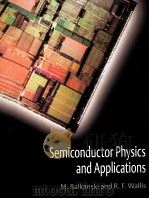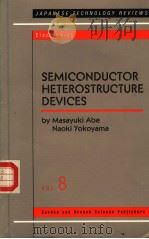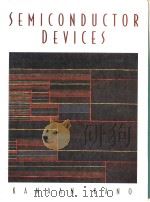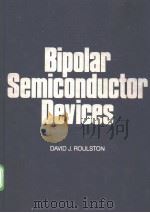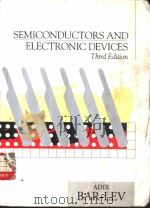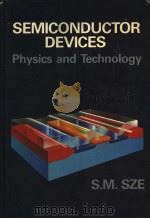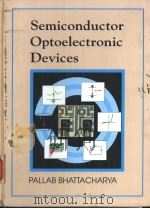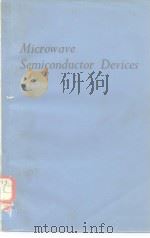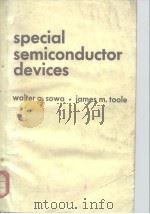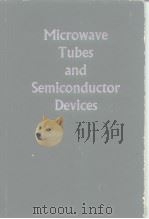《Semiconductor devices and applications》
| 作者 | 编者 |
|---|---|
| 出版 | 未查询到或未知 |
| 参考页数 | 493 |
| 出版时间 | 没有确切时间的资料 目录预览 |
| ISBN号 | 无 — 求助条款 |
| PDF编号 | 811332908(仅供预览,未存储实际文件) |
| 求助格式 | 扫描PDF(若分多册发行,每次仅能受理1册) |

Chapter 1.The Structure of Atoms and Solids1
1-1.Modern Concepts in Atomic Physics1
1-2.The Laws Which Describe Atoms3
1-3.The Schrodinger Equation6
1-4.The Periodic Table8
1-5.Crystalline Solids11
1-6.The Energy-band Structure of Solids16
Chapter 2.Electrical Conduction in Solids22
2-1.Conductivity22
2-2.The Allowed Motion of Electrons in the Energy Bands24
2-3.Electron Conduction26
2-4.Hole Conduction28
2-5.The Band Structure of Insulators29
2-6.The Band Structure of Semiconductors31
2-7.The Band Structure of Metals32
Chapter 3.Particle Physics34
3-1.Particle Distribution Functions34
3-2.The Fermi Function39
3-3.Combined Distribution Functions40
3-4.Diffusion of Particles43
3-5.Drift of Particles46
3-6.Combined Drift and Diffusion49
Chapter 4.Practical Semiconductors52
4-1.Photons,Phonons,Electrons,and Holes52
4-2.Defects and Impurities55
4-3.Intrinsic Semiconductors58
4-4.Extrinsic Semiconductors65
Chapter 5.Semiconductor Preparation,Properties,and Measurements73
5-1.Preparation of Germanium and Silicon73
5-2.Crystal Growing76
5-3.Measurement of Resistivity77
5-4.Measurement of Drift Mobility and Hall Mobility80
5-5.Lifetime of Carriers84
Chapter 6.Contacts87
6-1.Introduction87
6-2.Electric Potential88
6-3.Metal-Metal Contacts91
6-4.Metal-Semiconductor Contacts93
6-5.Ohmio Contacts96
Chapter 7.Junctions99
7-1.Methods of Preparing p-n Junctions99
7-2.The p-n Junction103
7-3.Diode Resistanee108
7-4.Calculation of Ip and In109
7-5.The Space-charge Region113
7-6.The Transition Capacitance115
7-7.The Diffusion Capacitance119
7-8.Temperature Dependence of Junction Characteristics121
7-9.Reverse-bias Breakdown123
7-10.The Tunnel Diode126
Chapter 8.Diodes130
8-1.Junction Diodes130
8-2.Junction-diode Characteristics133
8-3.Switching Effects in Junction Diodes136
8-4.Conductivity-modulated Rectifiers137
8-5.Point-contact Diodes138
8-6.Plate Rectifiers141
Chapter 9.Transistors,the Basic Mechanism145
9-1.The Structure of the Triode Transistor146
9-2.Transistor Action149
9-3.The General Transistor Equations153
9-4.Current Relations in the Plane Triode155
9-5.The Collector Efficiency161
9-6.The Collector Saturation Current161
9-7.Base-width Modulation162
Chapter 10.Practical Transistor Characteristics164
10-1.Characteristics164
10-2.Common-base Characteristics167
10-3.Common-emitter Characteristics171
10-4.Load Lines and Dynamic Characteristics178
10-5.Power,Current,and Voltage Ratings181
Chapter 11.Biasing and Stabilization185
11-1.The Thermal-electrical Power Balance185
11-2.Linear Stabilization193
11-3.Linear Stabilization at Higher Powers200
11-4.Nonlinear Stabilization204
Chapter 12.Transistor Parameters208
12-1.Active-network Parameters209
12-2.A Physical Derivation of an Equivalent Circuit213
12-3.The Hybrid-parameter Equivalent Circuit219
12-4.The T-element Equivalent Circuit227
12-5.The Hybrid-π Equivalent Circuit229
12-6.The Dependence of Parameters on Q Point and Temperature232
Chapter 13.Small-sighal Amplifiers235
13-1.Single-stage Amplifiers236
13-2.Single-stage Amplifiers Using T elements244
13-3.Modified Equivalent Circuits245
13-4.Cascaded Stages248
13-5.RC-coupled Stages251
13-6.Amplifiers with Feedback259
13-7.Common-collector and Compound Amplifiers264
13-8.Multistage Feedback Amplifiers269
Chapter 14.Power Amplifiers274
14-1.High-level Stages274
14-2.Class A279
14-3.Class B286
14-4.Driver Stages290
14-5.Compound Stages293
14-6.Complementary Symmetry294
14-7.Example Power Amplifiers295
Chapter 15.Direct-current Amplifiers300
15-1.The Drift Problem300
15-2.Compensation Techniques303
15-3.Difference Amplifiers306
15-4.Chopper-stabilized Systems310
15-5.Large-signal D-C Amplifiers312
Chapter 16.Power Supplies315
16-1.Rectifier Arrangements315
16-2.Diode Voltage Regulators317
16-3.Shunt Regulators322
16-4.Series Regulators324
16-5.Emitter-follower Regulators326
16-6.Current Regulators328
16-7.Current-limiting Circuits329
Chapter 17.Sinusoidal Oscillators331
17-l.General Principles331
17-2.Negative-resistance Oscillators333
17-3 RC Oscillators335
17-4.LC Oscillators338
17-5.Crystal Oscillators343
Chapter 18.High-frequency and Switching Transistors344
18-1.Frequency-response Limits in Transistor Design345
18-2.High-frequency Transistors348
l8-3.High-frequency Parameters352
18-4.Storage and Switching Effects354
18-5.Steady-state Switching Properties362
Chapter 19.Switching-mode Circuits367
19-1.Limiters,Clippers,and Clamps367
19-2.Choppers371
19-3.Logic and Logic Circuits373
19-4.High-speed Logic381
19-5.Power-level Switches384
Chapter 20.Regenerative Switching-mode Circuits386
20-1.Bistable Circuits386
20-2.Astable and Monostable Circuits392
20-3.Trigger Circuits396
20-4.Counters and Shift Registers399
20-5.Power Converters403
Postface407
Appendix A-1.Units and Special Functions413
A-2.List of Symbols415
A-3.Matrixes420
A-4.Parameter Interrelationships423
A-5.Gain Formulas428
A-6.Device Characteristics430
References457
Problems469
Index489
《Semiconductor devices and applications》由于是年代较久的资料都绝版了,几乎不可能购买到实物。如果大家为了学习确实需要,可向博主求助其电子版PDF文件。对合法合规的求助,我会当即受理并将下载地址发送给你。
高度相关资料
-
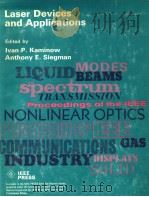
- LASER DEVICES AND APPLICATIONS
- THE INSTITUTE OF ELECTRICAL AND ELECTRONICS ENGINEERS,INC
-
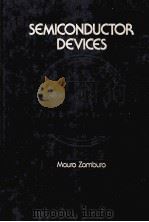
- Semiconductor devices
- 1989 McGraw-Hill Book Co.
-
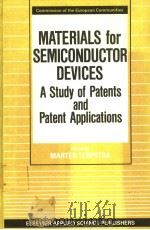
- MATERLALS FOR SEMICONDUCTOR DEVICES A STUDY OF PATENTS AND PATENT APPLICATIONS
- 1986 ELSEVIER APPLIED SCIENCE PUBLISHERS
-
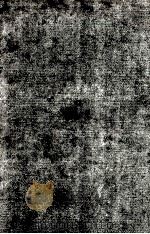
- Simulation of Semiconductor Devices and Processes
- 1984 Pineridge Press Limited
提示:百度云已更名为百度网盘(百度盘),天翼云盘、微盘下载地址……暂未提供。➥ PDF文字可复制化或转WORD
